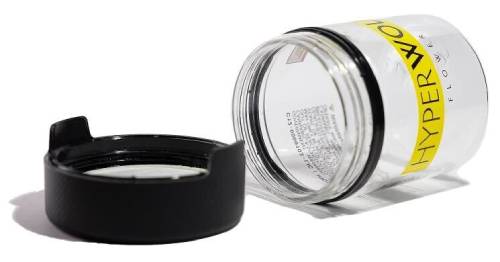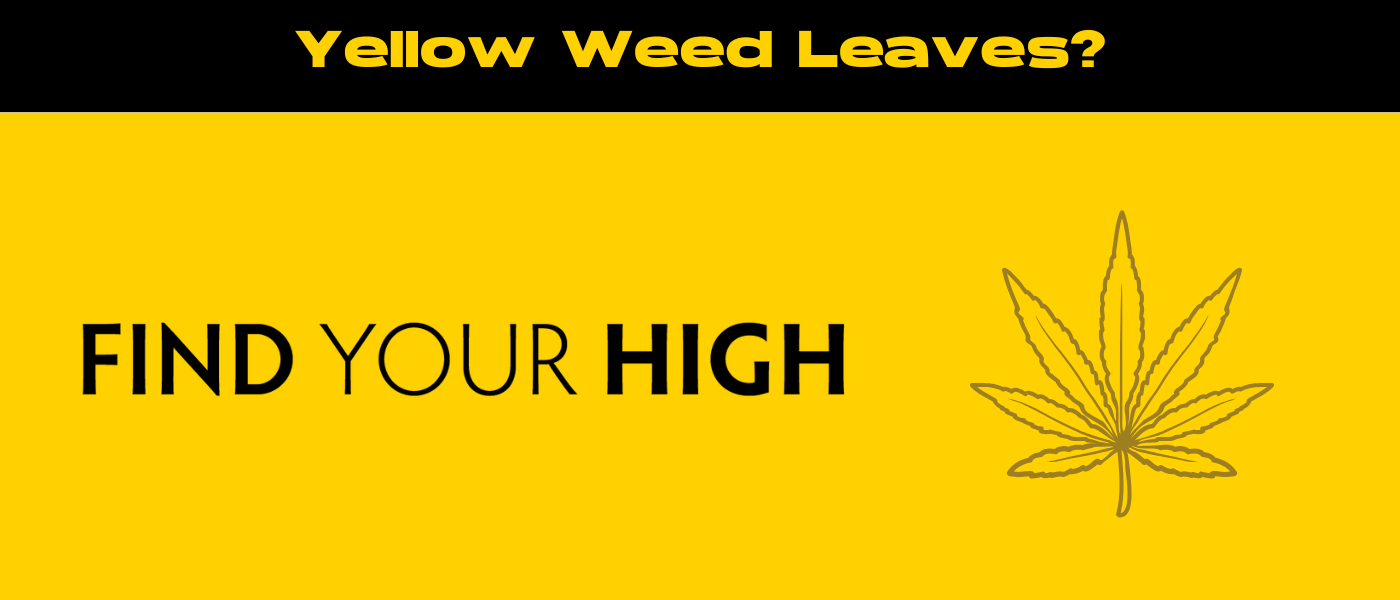Are your cannabis leaves turning yellow? Yellowing cannabis leaves are one of the most common—and alarming—issues growers face. Whether you’re a seasoned cultivator or planting your first seeds, watching your plant’s vibrant green foliage start to fade into sickly yellow can be downright stressful. The good news? Most causes are completely fixable once you know what you’re dealing with.
In this guide, we’ll break down the most common reasons cannabis leaves turn yellow, how to accurately diagnose the problem, and what steps you can take to prevent it from happening again. Consider this your comprehensive handbook for troubleshooting yellow cannabis leaves and bringing your grow back to its full potential.
What Healthy Cannabis Leaves Should Look Like
Before diving into what can go wrong, it’s helpful to understand what healthy cannabis leaves look like. Typically, cannabis leaves should be a rich, deep green color, with no discoloration or spotting. Fan leaves (the larger ones that fan out from the stems) should appear symmetrical, flat, and firm to the touch. Sugar leaves (the smaller ones near the buds) may take on slightly different tones depending on the strain, but in general, all leaves should be pliable, vibrant, and uniform in color.
Healthy leaves are good indicators of overall cannabis plant health. So, if you start to notice discoloration, curling, or drooping, it’s often your plant’s way of telling you that something’s off.

When to Worry: Is Yellowing Normal or a Red Flag?
If your marijuana leaves turning yellow, don’t worry—yet! As cannabis plants mature—especially in the late flowering stage—it’s completely normal for some of the older, lower yellow fan leaves to turn yellow and fall off. The plant is simply redirecting its energy to support the buds.
But timing is everything. If yellowing occurs during the vegetative stage or early in flowering, or if it spreads rapidly and affects the upper canopy or cannabis flowers, it’s likely a red flag. Early yellowing usually points to an environmental issue, nutrient imbalance, or pest problem that needs your attention ASAP.
Nutrient Deficiencies That Cause Yellow Leaves
When cannabis isn’t getting the essential nutrients it needs—or if it can’t absorb them properly—yellowing is often one of the first signs. Here are the most common deficiencies to look out for:
Nitrogen Deficiency: This is by far the most frequent cause of yellow leaves. Nitrogen is a key nutrient in vegetative growth, and a shortage causes older leaves to yellow and fall off from the bottom up. If caught early, this is easily reversible with a nitrogen-rich fertilizer.
Magnesium Deficiency: You’ll notice interveinal chlorosis (yellowing between the veins) on older leaves. Magnesium plays a role in photosynthesis, and without it, the plant struggles to convert light into energy.
Iron Deficiency: Unlike magnesium, iron deficiency typically starts at the top of the plant with yellowing between leaf veins in new growth. Leaves may appear pale or almost white at the tips.
Sulfur and Zinc Deficiencies: These are less common but still worth mentioning. Sulfur deficiencies show as all-over yellowing of young leaves, while zinc issues usually cause distortion and yellowing at the leaf tips and edges.
In many cases, these deficiencies stem from pH issues rather than an actual lack of nutrients in the soil. When the pH is off, cannabis plants can’t properly absorb available nutrients.
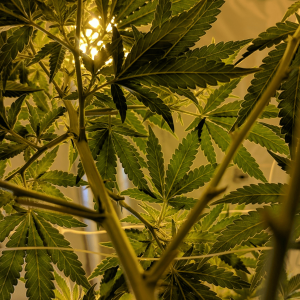
Overwatering and Poor Drainage
Too much love in the form of overwatering is a common rookie mistake. Overwatering leads to waterlogged soil, which drowns roots and deprives them of oxygen. The result? Yellow, droopy leaves that look almost wilted.
Roots that sit in overly moist soil for too long may also start to rot, further compounding the issue. If your soil feels soggy hours after watering or your pot lacks adequate drainage holes, that could be your culprit.
To prevent this, allow the top inch or two of soil to dry out before watering again. Ensure your containers have drainage holes and consider using a well-aerated soil mix with perlite or coco coir.
Underwatering and Drought Stress
On the flip side, too little water can cause just as many problems. If your plant is severely dehydrated, the leaves may start curling inward and turning yellow or brown around the edges.
This usually comes with dry, crumbly soil and a lightweight pot that feels almost empty. When rehydrating a parched plant, water slowly and evenly until you see some runoff from the bottom of the pot.
Then, adjust your watering practices schedule to ensure a more consistent moisture level moving forward. Cannabis likes a wet-dry cycle, but you don’t want the soil bone-dry for extended periods.
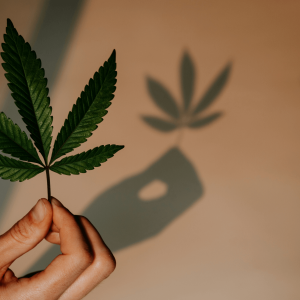
Light Burn or Light Deficiency
Lighting issues can also cause yellowing. When plants are too close to high-intensity grow lights, especially LEDs, they may develop “light burn”—a form of stress that leads to yellowing or bleaching on the upper leaves closest to the light.
Conversely, insufficient lighting can cause lower leaves to yellow and fall off as the plant redirects energy to the upper canopy. Both extremes can harm growth and yield.
Keep grow lights the correct distance from your canopy, and rotate your plants occasionally to ensure even exposure. For indoor growers, using a PAR meter to measure light intensity is a game-changer.
Root Problems: Rot, Bound Roots, and Disease
Unhealthy roots often lead to yellowing, even if everything above ground seems fine at first. If roots can’t breathe, absorb nutrients, or expand properly, the leaves will suffer.
Root rot is a major concern in overwatered conditions. It’s often accompanied by a foul smell and mushy roots. Once rot sets in, the plant may need to be transplanted into fresh soil and treated with beneficial microbes.
Rootbound plants are another issue. If your plant is in a pot that’s too small, the roots can circle and choke themselves out, limiting nutrient uptake and causing yellowing. Transplanting to a larger container usually resolves this.
pH Imbalance in Soil or Hydroponics
Even if your nutrient mix is perfect, cannabis can’t absorb what it needs if the pH is out of range. For soil, the ideal pH is between 6.0 and 7.0. For hydroponics, aim for 5.5 to 6.5.
If the pH drifts too far outside these ranges, nutrient lockout occurs. This means your plant can’t access essential minerals, even if they’re present in the medium.
Always test the pH of your water and runoff regularly. If needed, use pH up/down solutions to make small adjustments. Investing in a digital pH meter is one of the smartest moves a grower can make.
Pest Infestations and Yellow Leaves
Some yellowing issues have nothing to do with nutrients or watering. Tiny pests can wreak havoc on cannabis plants, and their presence often results in yellow or spotted leaves.
Common culprits include:
- Spider mites: Leave fine webbing and yellow speckling on leaves.
- Aphids: Cluster under leaves and suck sap, causing distortion and yellowing.
- Thrips: Scrape the leaf surface, creating silvery trails and yellow patches.
Check the undersides of leaves regularly and use a jeweler’s loupe or magnifying glass to spot small intruders. Neem oil, insecticidal soap, and predatory insects like ladybugs can help eliminate infestations.
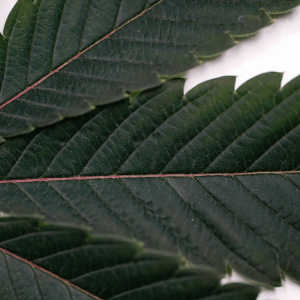
Fungal and Bacterial Infections
Yellowing leaves can also stem from infections, particularly in high-humidity environments. Common culprits include fungal pathogens like Fusarium and Pythium, which cause root rot, and foliar diseases such as leaf septoria.
Symptoms may include yellow or brown spots that spread and eventually turn brown, curled leaves, or even mold growth. Infected plants should be isolated immediately.
Improve air circulation, reduce humidity, and apply appropriate fungicides if needed. Avoid getting foliage wet during watering, especially in late flowering.
Genetic Traits and Strain-Specific Quirks
Sometimes, yellowing isn’t a sign of distress—it’s just part of the plant’s natural life cycle. Certain strains (especially those with purple or gold phenotypes) may display color shifts as they near harvest.
If your plant is otherwise healthy—vigorous cannabis growth, strong aroma, dense bud formation—but showing yellow in the late flowering stage, it may just be genetics at play.
Knowing your strain’s characteristics will help you distinguish between normal behavior and actual problems. When in doubt, cross-reference with reputable strain databases.
How to Diagnose Yellowing Leaves: Step-by-Step Guide
When you spot yellowing leaves, resist the urge to panic and throw every nutrient in your arsenal at the plant. Instead, take a methodical approach:
- Assess watering habits – Are you over- or under-watering?
- Check the lighting – Are your plants too close to a hot light source?
- Inspect for pests – Look under leaves and around the soil.
- Test pH – Is the soil or hydro solution within the optimal range?
- Look at the pattern – Which leaves are yellowing? Older ones at the bottom or new growth at the top?
- Consider the stage – Is the plant in late flower? Could it be natural aging?
Using a process of elimination is often the best way to pinpoint the exact issue. Keep detailed notes—observation is one of the most underrated tools in cannabis cultivation.
How to Prevent Cannabis Leaves from Turning Yellow
Prevention is always easier than treatment, especially when you’re trying to keep a grow on track. Here are some tried-and-true strategies:
- Follow a balanced nutrient schedule and adjust based on plant stage.
- Test pH levels frequently and correct imbalances immediately.
- Water properly: Don’t drown your plants or leave them thirsty.
- Use breathable containers and well-draining soil.
- Ensure proper lighting and adjust intensity or distance as needed.
- Maintain clean, pest-free environments: Sanitize tools and inspect plants regularly.
You don’t have to overcomplicate it. The key is consistency—feeding, watering, lighting, and checking pH should all become part of your regular grow routine. When your plants are happy, you’ll know.

Conclusion
Yellow cannabis leaves are a signal that something’s off—but they’re also a chance to learn, improve your setup, and become a better grower. Whether it’s a nutrient issue, watering mistake, pest problem, or just natural aging, understanding the cause is half the battle.
Pay attention to the clues your plants give you, and don’t be afraid to experiment and fine-tune your approach. The more time you spend with your plants, the easier it becomes to spot issues early and keep your crop thriving.
With the right knowledge and a little patience, those yellow leaves can go from frustrating to fascinating. And before you know it, your cannabis plants will be back to their vibrant green selves—ready to reward you with a healthy, high-quality harvestFrequently Asked Questions
1. Why are my cannabis leaves turning yellow?
Yellowing cannabis leaves can happen for a number of reasons, and figuring out the exact cause requires looking at your plant’s environment and routine. The most common culprits are nutrient deficiencies—especially nitrogen—followed closely by watering issues (either too much or too little), pH imbalances, poor lighting, and pests. In some cases, yellowing is totally normal, especially during the late flowering stage when plants naturally begin to die off older fan leaves to focus energy on the buds. The key is to look at when the yellowing happens and where on the plant to better diagnose the issue.
2. How do you fix yellowing plant leaves?
Start by identifying the root cause. If you suspect a nutrient deficiency, a targeted feeding (like a nitrogen-rich fertilizer) can help. If overwatering is the issue, ease up on the schedule and let the topsoil dry out. For underwatering, rehydrate the soil slowly and evenly. pH imbalance? Test your soil or water solution and adjust using pH up or down. Spotting pests? Remove them manually and apply neem oil or insecticidal soap. It’s all about using a process of elimination—correcting one variable at a time to avoid stressing the plant further.
3. What does nitrogen deficiency look like in cannabis?
Nitrogen deficiency usually starts from the bottom of the plant and works its way up. The lower, older leaves will turn a pale yellow and may wilt or fall off completely if left untreated. The discoloration typically begins at the tips and edges before spreading inward. Since nitrogen is vital for vegetative growth, a lack of it can seriously stunt your plant’s development if not addressed early. Adding a nutrient formula high in nitrogen can often reverse the yellowing quickly.
4. What do overwatered cannabis leaves look like?
Overwatered cannabis leaves usually appear droopy, soft, and a bit swollen, almost like they’re too heavy for the plant to support. As overwatering continues, the leaves may begin to yellow, starting from the bottom of the plant. The soil will feel wet or soggy even a day or two after watering, and you might notice a lack of new growth or an overall sad, slumped-over appearance. If roots begin to rot, you may even smell a musty odor near the base. Letting the soil dry out and improving drainage is essential to fixing the issue.

 Rewards
Rewards


